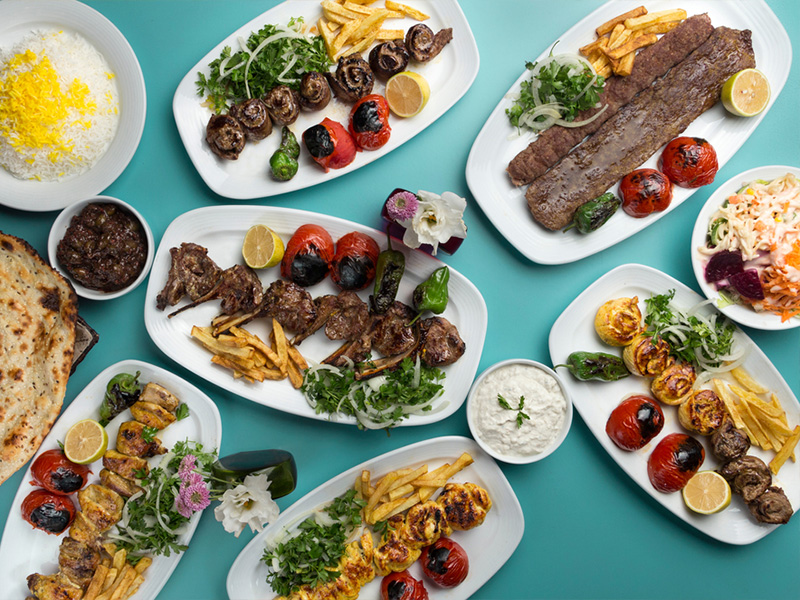Art of Iranian Cuisine
Persia is a nation with a rich history, culture, and traditions. Iran is a vast nation with a lot to discover. And eating is also not an exception. Iranian tradition dictates that only the best food is offered to guests or visitors and that it is always done in the most pleasing way possible. The food provided in Iran hasn’t changed all that much throughout the years. In this post of Eligasht, we have gathered together the most delicious Iranian cuisine according to tourists.
|book direct flight uk to iran from eligasht website|
Typical Ingredients of Iranian Cuisine
Rice is often combined with a variety of meats, vegetables, and nuts to create traditional Iranian cuisine. Herbs, as well as fruits like plums, pomegranates, quince, prunes, apricots, and raisins, are usually utilized in the preparation of these dishes. Saffron, cardamom, dried lime, and other sources of sour taste, cinnamon, turmeric, and parsley are some of the distinctive Iranian spices and flavorings that are combined and utilized in a variety of recipes.
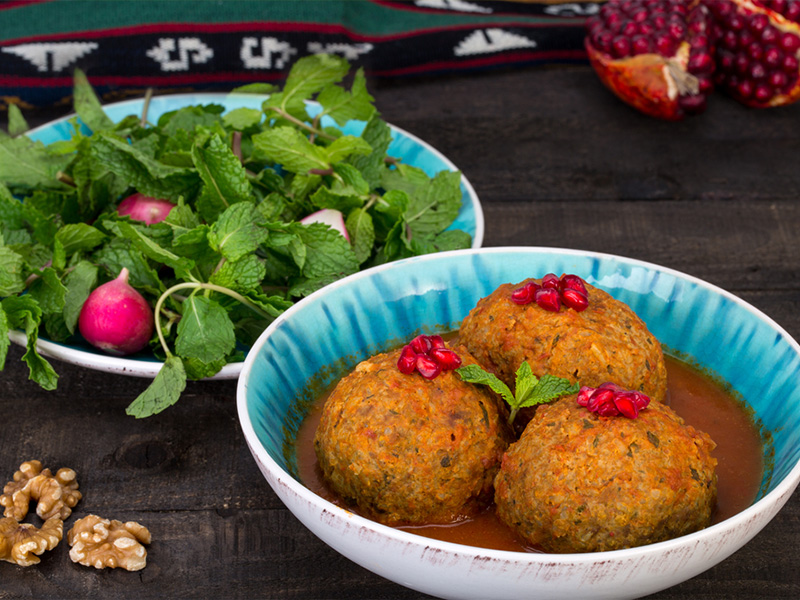
Types of Rice
Rice was once a specialty of the Safavid Empire’s court food; nevertheless, by the end of the 16th century CE, the use of rice had developed into a significant aspect of Iranian cuisine. Rice was traditionally the most common and vital staple food item in the households of rich people in northern Iran, whereas bread was the most common and essential staple food item in the other parts of the nation.
- Polow and chelow: Polow is rice combined with anything, while chelow is plain rice eaten as a side dish with a stew or Kebab. However, they are prepared in the same manner. After soaking in salted water, rice is boiled to make it ready. It is then put back in the kettle to steam
- Kateh: Kateh is the rice that has been cooked until all of the water has been absorbed. It is the province of Gilan’s national dish
- Dami: Dami is prepared similarly to kateh but with the addition of grains and beans at the beginning so they may thoroughly cook with the rice. The heat is kept to a minimum when cooking kateh until the rice and other components are practically done
Tahdig: The Art Of Iranian Cuisine
Persian word tahdig, pronounced tah-deeg, literally translates to “bottom of the pot.” It also refers to a stunning dish of pan-fried Persian rice, which is the layer at the bottom of the pot. It is fluffy and buttery on the inside, with a flawlessly golden exterior. It has a lovely saffron garnish and is often perfumed with orange zest. This Iranian cuisine is almost served when the main course is finished!
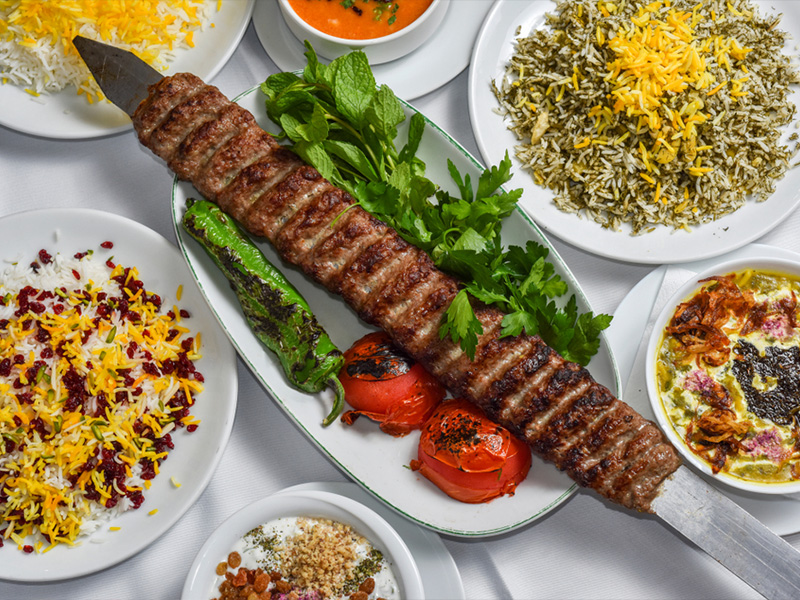
The Most Delicious Iranian Cuisine
Iranian cuisine is comprised of a vast range of meals, some of which include several types of Kebab, stew, soup, and pilaf dishes (Polow), in addition to a selection of salads, desserts, pastries, and beverages.
Kebab; The Most Liked Iranian Cuisine
Rice or bread is often served with kebabs when they are served in Iran. Chelow kabab is the name given to a meal that consists of white chelow rice served with Kebab and is regarded to be Iran’s national cuisine. It is also possible to make rice using the kateh technique. If this were done, the meal would be referred to as kateh kabab. There are many types of Kebabs in Iran, all of which are delicious and liked by tourists!
- Kabab koobideh: Traditionally, kabab koobideh is grilled over hot coals on broad, flat skewers. It is served with chelow, which is just white rice seasoned with saffron, oil, and salt, and grilled tomatoes and onions. Sumac is often offered as a condiment at the meal. This type of Kebab is the main Iranian cuisine for tourists
- Jujeh Kebab: An Iranian cuisine called Jujeh Kabab is made of grilled chicken portions, sometimes with the bone and sometimes without. One of Iran’s most typical and well-liked cuisines is joojeh Kebab (Grilled chicken). The pieces are often marinated with saffron, lemon juice, and chopped onion
- Shashlik: Shashlik, often spelled shashlick, is a meal made of skewered and grilled beef cubes that are comparable to or interchangeable with shish Kebab. In Iran, the Caucasus, Eastern Europe, and Central Asia, it is known by a number of different names. From the 19th century, it gained popularity as shashlik across most of the Russian Empire, and it is still common in the Russian Federation and former Soviet republics today
- Barg Kebab: A lamb, chicken, or beef kabab meal prepared in a Persian manner is called kabab-e Barg (literally, “Leaf Kebab”). Beef tenderloin, lamb sirloin, or, less often, chicken breast, combined with onions and olive oil are the major components of kabab-e barg. Kabab barg and kabab koobideh are among the most popular meals offered in restaurants serving Iranian cuisine
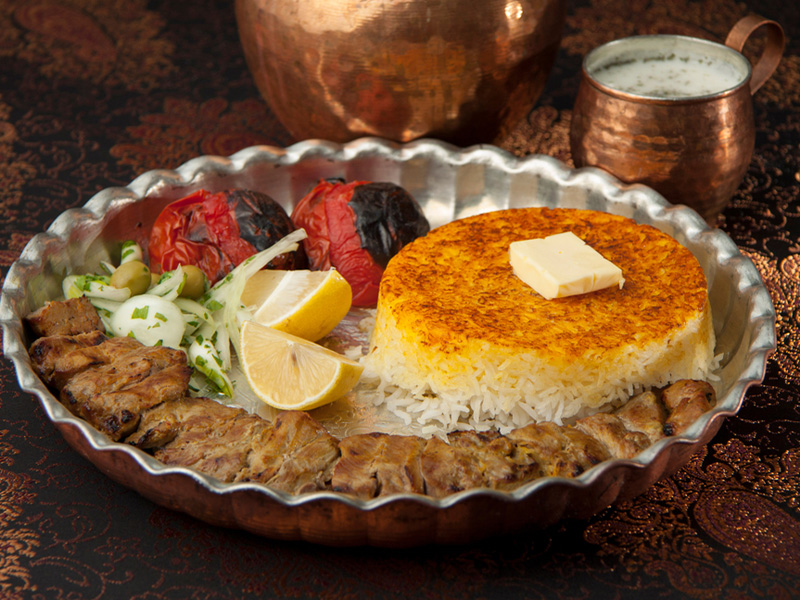
- Bonab Kebab: The ingredients for bonab kabab include minced mutton, onion, and salt. It is called after the city of Bonab, which its Kebab is renowned for its giant size. The city is located in the northwestern Iranian province of Azerbaijan
Asheh Reshteh
Ashe Reshteh is a soup comprised of herbs, beans, and noodles. This Persian dish is served most commonly during festivals and special occasions. “Ashe” is the Iranian name for a thick soup, while “Reshteh” is a sort of thin noodle. On a chilly evening, a bowl of Ashe Resheteh is the ideal soup to warm you up. Ashe Reshteh is a popular dish among foreign visitors to Iran since it is both satisfying and reassuring. It satisfies your hunger and puts a smile on your face. Another fantastic thing about Ashe Reshteh is that everyone cooks it somewhat differently. Each time you try Ashe Reshteh, you’ll get a different flavor experience.
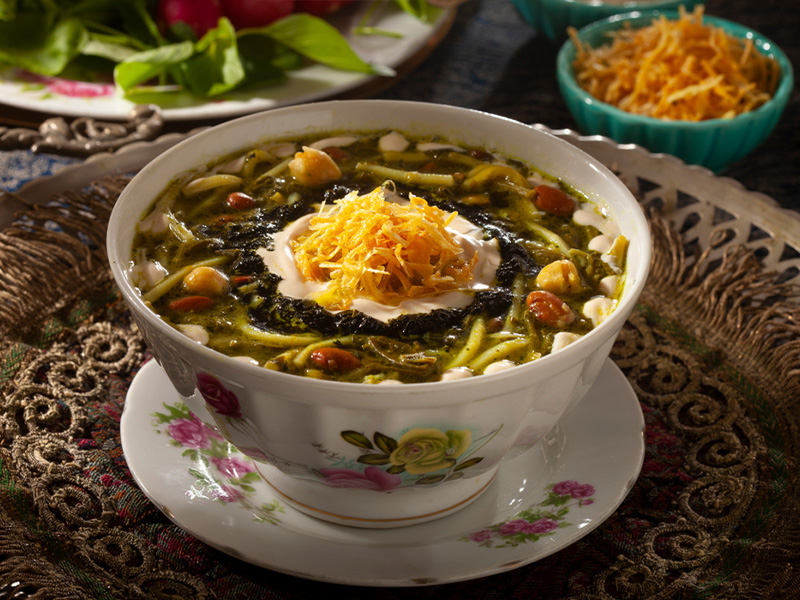
Ghorme Sabzi
Without a doubt, Ghorme Sabzi is the most liked Iranian cuisine after Persian Kebabs. The Iranian cuisine known as Ghormeh Sabzi is a stew that is made of meat, green vegetables, and other spices. For a good reason, several people in Iran believe it to be the country’s signature dish. Because of the abundance of taste in this stew, it is one of the most popular dishes that is served in Persian restaurants for tourists and locals.
This dish is prepared by sautéing various herbs, such as parsley, leeks, green onions, and coriander. Additionally, you may add vegetables like kale and turnip greens. The beans and lamb or beef benefit tremendously from the addition of this herb combination, which packs a flavor punch. The ingredients are softened by being slow-cooked in a saucepan with oil and water until they are thoroughly cooked through. Tourists adore Ghormeh Sabzi due to the fact that it is rich in flavor and has a flavor profile that is robust. It has a taste that is reminiscent of freshness thanks to the greens and herbs, and the meat is what makes it delightful.
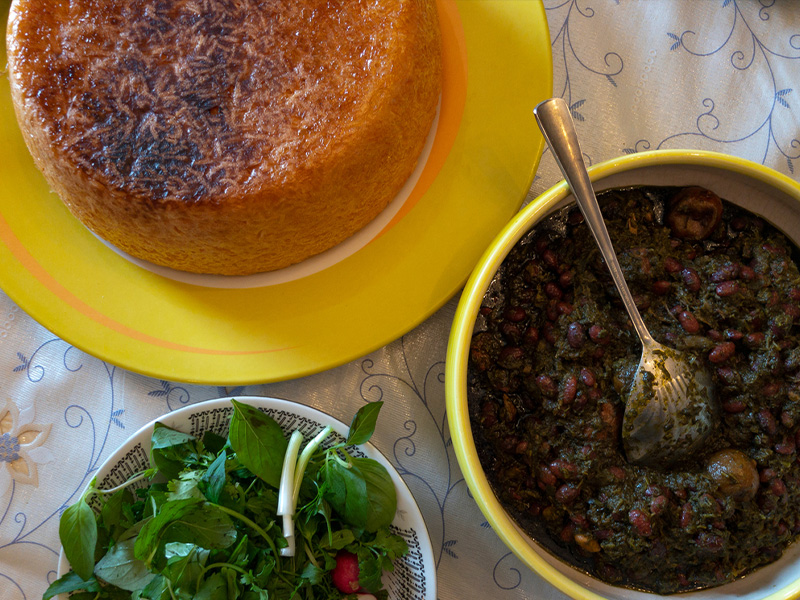
Tahchin
Rice, yogurt, saffron, eggs, and tart barberries (Zereshk) are the primary components of the traditional Iranian cuisine tahchin. Some preparations of the meal take a more involved approach by adding fillets of chicken, veggies, fish, or even red meat to the mix. The dish known as tahchin is made up of two distinct components: the first is a thin layer of tahdig, which is comprised of the chicken fillets, saffron, and other ingredients that are located at the bottom of the cooking pot; and the second, a layer of white rice. The white rice component of tahchin is often omitted when it is being made and served in restaurants. Cooking tahchin may be done in a variety of methods, including the following:
- Chicken Tahchin
- Meat Tahchin
- Meat and eggplant Tahchin
- Spinach Tahchin
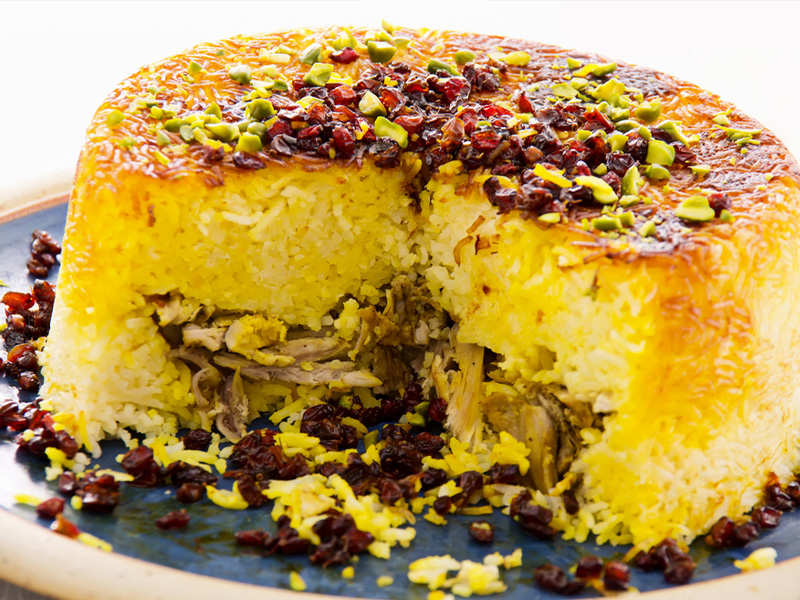
Abgoosht or Dizi
Iranian dish called “meat broth” or “abgoosht.” It is also known as “Dizi,” from the traditional stoneware crocks served with it. Some refer to it as a “hearty chickpea-thickened mutton Persian soup. Lamb, chickpeas, white beans, onions, potatoes, tomatoes, turmeric, and dried lime are often used to make Abgoosht. The types of beans that may be utilized vary, including kidney beans and black-eyed peas. After the meal has finished cooking, the ingredients are blended and combined.
The broth is served with flatbread, and the solids are crushed and served as gusht kubideh, or “mashed meat,” in a separate dish. Piti, a well-known Azerbaijani meal, is a variation of Abgoosht and includes several regional recipes that are comparable to it. Abgoosht is an Iranian cuisine that serves at restaurants on Fridays.
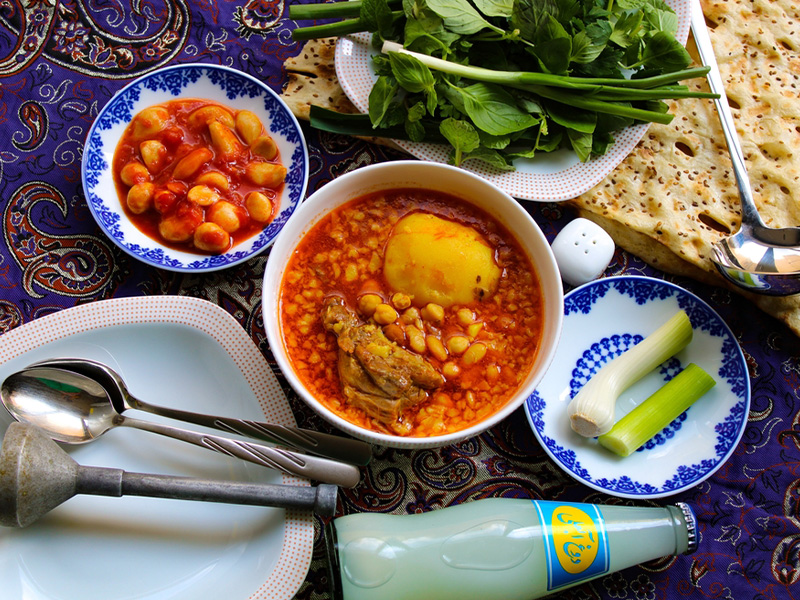
Khoresh-e Fesenjoon
Fesenjoon is from the lush hills and seashore of northern Iran, where pomegranate and walnut trees are found. This stew braises bone-in chicken thighs in a mixture of toasted walnuts, pomegranate juice, and pomegranate molasses, taking flavor cues from the landscape. The sauce thickens and deepens as it cooks to a shade of dark brown resembling mole poblano. To prevent it from getting excessively sticky and syrupy, thin it down with water. The stew is one of the most exquisite meals in Iranian cuisine because of the pomegranate’s sweet and tart taste as well as the smooth texture the walnuts add.
Gheimeh (Qeimeh)
The Iranian dish known as Gheimeh or Qeimeh is a kind of stew known as khoresh. It is made with diced mutton, tomatoes, split peas, onion, and dried lime, and it is topped with golden, thinly sliced potatoes that are crispy. It is common practice to accompany the stew with white rice (Polow), and fried eggplant is occasionally used as a garnish. The term gheimeh originates from the Classical Persian word qeema, which in turn stems from the Turkic word qyma, which means “minced flesh.” During the annual Ashura commemorations in Iraq, vast quantities of a dish called qeema, which is made with beef that has been finely diced and crushed split peas, are cooked on a communal scale.
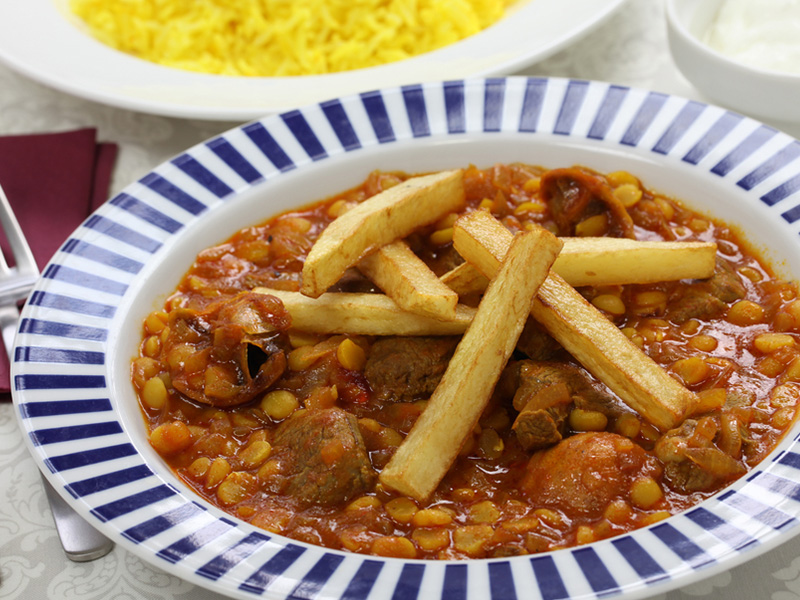
Gheimeh Nesar
It is a fantastic experience to taste the most incredible traditional dish, which is known as Gheimeh Nesar, in the city of Qazvin. This flavorful dish is in great demand, and the fact that it is offered in many of the city’s most renowned restaurants is evidence of its appeal. Gheimeh Nesar, also known as Persian Jewelled Rice Lamb, is essentially a mixture of rice, meat, barberries, silvered almonds, and orange peel. This combination lends the cuisine a flavor that is difficult to forget, and it is possible that you have never had it anywhere else. In reality, Qazvin is the city with the most refined Iranian cuisine as well as the most spectacular food and desserts.
Zereshk Polow
One of the most well-liked meals in the Persian culinary tradition, Zereshk Polow has a delicious mix of saffron, turmeric, and fried dried barberries over the surface of the dish that is being served. Saffron is a spice that is used in a wide variety of Iranian cuisine, including, of course, Zereshk-Polo (dried barberry with rice). Rice that has been flavored with barberries. On the other hand, it is often served with Kebab or chicken that has been cooked. The red berries that are sprinkled on top of this meal are barberries, also known as berberries. Barberries are a kind of fruit that comes from the barberry shrub and are sometimes confused for pomegranates at first look.
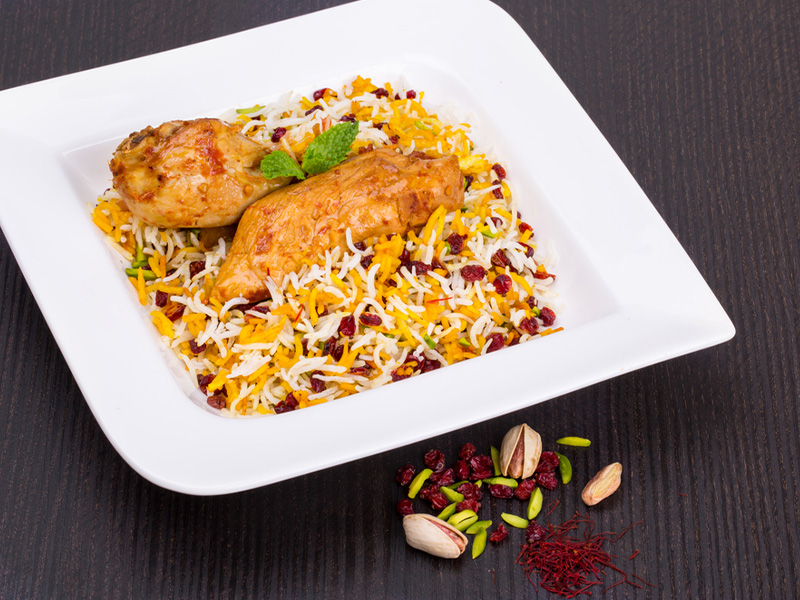
Zereshk Polow + chicken
The meal known as Zereshk Polow, which is often made with chicken and is another of the most refined Iranian foods, is typically offered during the celebrations. The dish known as Zereshk Polow is made by combining barberries, saffron, and white rice. In addition to having an exceptionally mouthwatering flavor, this dish also has an extraordinarily stunning and regal look. One of the most mouthwatering Iranian meals, Zereshk Polo with chicken, has gained a lot of notoriety all over the globe in recent years.
No Problem If You Are A Vegetarian
Tourists who are vegetarians might think about knowing the names of a few Iranian vegetarian meals. So that you may ask for them and be understood, learn how to state “I am a vegetarian” correctly in Farsi. As you travel around Iran, here is a brief list of other foods that can be vegetarian-friendly:
- Vegetarian khoresht (stew)
- Vegetarian Tabrizi koofteh
- Baghali polo (dill rice with fava beans)
- Snacks like roasted red beets (laboo)
This list may be helpful as well. Inform your tour guide in advance if you are a vegetarian. He or she could be successful in persuading some of the eateries you go to prepare a special vegetarian dish for you!!
